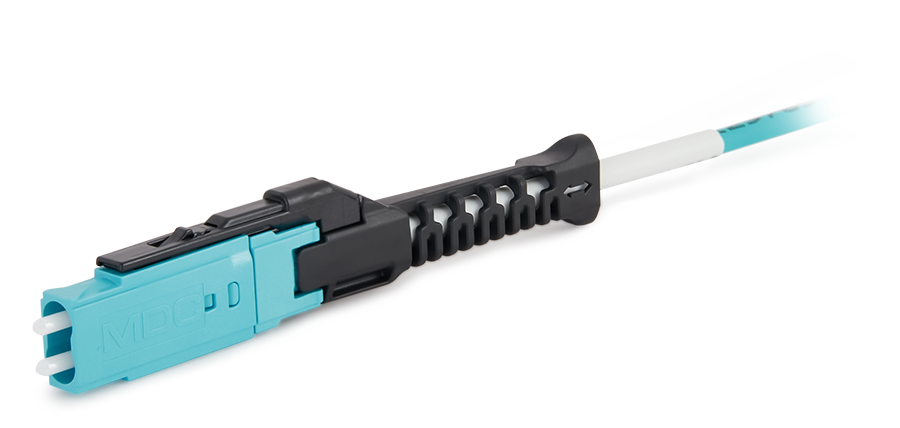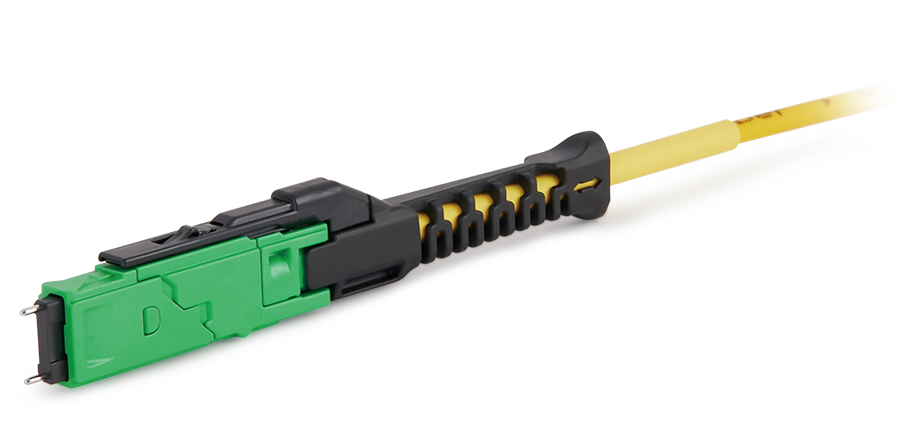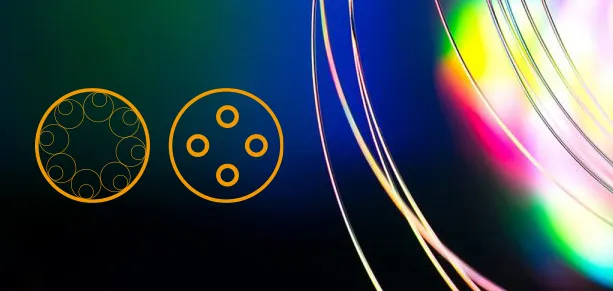In optical network topologies, the advent of fiber optic splitters helps users maximize network performance. A fiber splitter is a passive optical device that can split an optical signal into multiple optical signal outputs, including one, two, and multiple outputs. When the optical network system needs to the couple and distributes the optical signal, it can be realized by using the optical fiber splitter.
1. An overview of fiber optic splitters
An optical fiber splitter, also known as an optical splitter, PLC splitter, is an integrated waveguide optical power distribution device, whose function is to realize the splitting of optical signals. For example, a 1x4 optical splitter can divide one input optical signal into four output optical signals in equal proportions, and transmit them in four different channels. Today, fiber optic splitters are widely used in passive optical networks (such as EPON, GPON, BPON, FTTX, FTTH, etc.) and play an important role.
2. The working principle of fiber optic splitter
When an optical signal is transmitted in a single-mode fiber, the light energy cannot be fully concentrated in the core to transmit, and a small amount of light energy actually transmits near the fiber cladding.
In general, when the cores of two fibers are close enough, the optical signal transmitted in one fiber can enter the other fiber. That is, the optical signal can be redistributed in the two fibers, which is the foundament of the fiber splitter.
For example, a 1x4 fiber optic splitter can distribute the optical signal from one fiber equally to four fibers. To put it simply, 1000Mbps bandwidth is evenly distributed to four households, and each household can use the network with 250Mbps bandwidth.
3. Types and selection of fiber optic splitters
At present, two types of optical splitters commonly used on the market are Planar Waveguide (PLC), Optical Splitter, and Fused Tapered (FBT) Optical Splitter. Compared with FBT optical splitter, PLC optical splitter has the advantages of a wide temperature range, low failure rate, good stability, and high flexibility. It is widely used in high-density applications, but its cost is generally higher than that of FBT optical splitters due to the relatively complex manufacturing process.
In practical applications, it is recommended to use FBT optical splitters for port configurations below 1×4, and PLC fiber optic cable splitters for port configurations above 1×8.
In addition to this, FBT optical splitters are more cost-effective for single-wavelength or dual-wavelength transmission. For PON transmission, considering the future network expansion and monitoring needs, a PLC fiber splitter is a better choice.
According to different dimensions, the optical splitter can also be classified into various types. For example, according to the packaging form, the optical splitter can be classified into box type and miniature optical splitter. Cassette splitters are usually used with fiber patch cords with an outer diameter of 2mm or 3mm, and miniature splitters are usually used with fiber patch cords with an outer diameter of 0.9mm.
4. The application of fiber optic splitter in the PON network
Fiber splitters are the core optical components in passive optical network (PON) systems and are widely used in fiber-to-the-home (FTTH). It has two different distribution modes in the FTTH network: centralized distribution and cascaded distribution.

 Fiber Optic Flex Circuit (FOFC)
Advanced Simulation & Optimization, High Positioning Accuracy, Flexible Customization, Rigorous Reliability Testing
Fiber Optic Flex Circuit (FOFC)
Advanced Simulation & Optimization, High Positioning Accuracy, Flexible Customization, Rigorous Reliability Testing MDC Solution
US Conec's MDC connector is a Very Small Form Factor (VSFF) duplex optical connector, expertly designed for terminating single-mode and multimode fiber cables with diameters up to 2.0mm.
MDC Solution
US Conec's MDC connector is a Very Small Form Factor (VSFF) duplex optical connector, expertly designed for terminating single-mode and multimode fiber cables with diameters up to 2.0mm. MMC Solution
US Conec's Very Small Form Factor (VSFF) multi-fiber optical connector that redefines high-density connectivity with its cutting-edge TMT ferrule technology and intuitive Direct-Conec™ push-pull boot design.
MMC Solution
US Conec's Very Small Form Factor (VSFF) multi-fiber optical connector that redefines high-density connectivity with its cutting-edge TMT ferrule technology and intuitive Direct-Conec™ push-pull boot design. EN
EN
 jp
jp  fr
fr  es
es  it
it  ru
ru  pt
pt  ar
ar  el
el  nl
nl 



_and_High-Reflection_(HR)_Optical_Coatings.webp)
